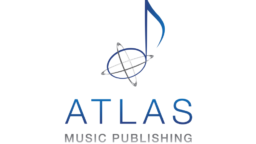It’s an interesting time for the debate surrounding how – and how much – streaming services pay different factions of the music industry.
The likes of Spotify, Apple and YouTube are due to enter global licensing renegotiations with major music companies this year, while Spotify in particular has attracted stinging industry criticism for filing a legal appeal against new mechanical streaming rates in the US, which would see songwriters and publishers benefit from a 44%-plus rise in royalty payouts.
Those US streaming rates were set by the market’s Copyright Royalty Board, which last year decided that, between 2018 and 2022, Spotify and other interactive streaming platforms should pay songwriters in accordance with the highest outcome across one of two different criteria: (i) a percentage of a streaming company’s total revenue; (ii) a percentage of what that streaming service pays to record labels each year.
Option (ii) here is of particular interest. The CRB ruled that, should this measure be chosen, Spotify et al should pay music publishers and songwriters a certain percentage of their ‘Total Content Costs’ (TCC) in the future. The remainder of these Total Content Costs would be paid to master recording rightsholders (i.e. to record labels and artists).
As you can see below, according to the CRB ruling, the publisher/songwriter share of an interactive audio streaming service’s TCC in the US is set to grow from 22% in 2018 to 26.2% in 2022. (Note: this is an ‘all-in’ royalty rate, encompassing both mechanical and performance streaming royalties for publishers.)


Despite offering a pay raise to songwriters and publishers, this would still mean that record labels and their artists – the other side of ‘Total Content Costs’ – stand to gain the vast majority of annual money from interactive music streaming in the years ahead. (In 2021, for example, the recorded music rightsholders would receive almost exactly three times the money from Spotify than their counterparts in publishing.)
For its part, Spotify has argued that the CRB’s ruling could be a threat to its business. In a blog post covering its CRB appeal, Spotify noted: “Music services, artists, songwriters and all other rightsholders share the same revenue stream, and it’s natural for everyone to want a bigger piece of that pie. But that cannot come at the expense of continuing to grow the industry via streaming. The CRB judges set the new publishing rates by assuming that record labels would react by reducing their licensing rates, but their assumption is incorrect.”
The claim here, that the CRB expected record labels to reduce their royalties in reaction to its new rates, was slammed as an outright lie by David Israelite, CEO of the National Music Publishers Association (NMPA).
Regardless, the point is clear: Spotify believes its loss-making business could be under further threat should it be forced to pay out the above percentage rates to publishers, while the record labels refuse to lower their own royalties.
Richard Stumpf (pictured) is CEO and a partner at New York-based Atlas Music Publishing. Atlas is a pretty big noise in independent publishing circles: it represents writers including Eddie and Alex Van Halen, Brandi Carlile, Warren Haynes, and Dan the Auotomator, and its songs have been performed by artists such including Andrea Bocelli, John Legend, Pearl Jam and Carrie Underwood.
Earlier this year, the firm – which also runs offices in Los Angeles and Nashville – hit headlines after being acquired by, and partnering with, superstar manager Scooter Braun and his funding vehicle, Ithaca Holdings.
Below, Stumpf sets out his argument for why the music industry must now “compromise” on the share of royalty money being paid out by streaming services like Spotify – and why, in his mind, the fairest way forward is for songwriters and publishers to be paid the same percentage of TCC from Spotify, Apple Music etc. as those rightsholders working in the record music business.
In exchange, he suggests, songwriters and publishers could agree to split their earnings from US radio broadcast with artists and record labels – subject to an overall pay rise for everyone. (Right now, US radio stations don’t have to pay artists a penny in performance royalties for using their music.)
Over to Richard…

First, without question songwriters deserve a raise and the idea that there is an appeal against the raise we were just granted is disturbing. To be honest, songwriters deserve a raise and then some! The elephant we need to address is that we on the content side need to fairly share these royalties between us after allowing for a reasonable distribution fee for the DSPs. We all need a healthy business environment. So, for example, if it is deemed that a reasonable fee for Spotify is 25%, the remaining 75% would be split 37.5% writer (publisher) side and 37.5% recording artist (label) side. Legislation isn’t going to get us there. Compromise will.
The logic is undeniable. Nobody can answer the question who is more important to the song, the writer or performer – Sammy or Frank so to speak. The answer is that both sides are equally as important. This is why, in the only open market licensing structure, synchronization, writer-side and performer-side are paid equally. All of our revenue streams should work in a similar fashion, and they can.
“For example, if it is deemed that a reasonable fee for Spotify is 25%, the remaining 75% would be split 37.5% writer (publisher) side and 37.5% recording artist (label) side. Legislation isn’t going to get us there. Compromise will.”
Right now, both sides suffer from legislation that is not in step with today’s music marketplace. Here are the two big issues: i) Publishers must provide a mechanical license to DSPs at a rate determined by a panel of three judges; ii) Labels get zero for performance on terrestrial radio.
I’ve fought for “Fair Play Fair Pay” that attempted to alleviate the latter, but let’s face it, the radio lobby is too strong and despite it being the absolute right thing, we’re losing this fight. Only when this element of the then “omnibus” bill was dropped did all the years of lobbying by myself and industry colleagues pay off with the passing of the MMA.
So what can we do as an industry to hopefully pull the government out of our negotiations and get to a fair place? Each side of the business needs to look at what it has and can offer to the other side that will result in fair rates for all creators. Publishers receive terrestrial radio royalties and labels do not. Both parties should go to radio and negotiate an economically sound and fair overall raise and then split that royalty equally.
If offered a reasonable increase, I believe radio would consider this versus years more of expensive lobbying against labels on this point and potentially losing with a risk of paying double what they pay now. Similarly, the parties should approach the DSPs and negotiate a fair royalty raise, which, as outlined above, should be split in half. It’s a long-term win-win for all parties.
About 7 years ago, when I was on the NMPA Board I suggested this very thing. An olive branch of sorts for to the labels at a time when they really needed one. Understandably, the then Board was very hesitant. After all, it would be a radical shift and the immediate result would be less publishing royalties.
“Publishers receive terrestrial radio royalties and labels do not. Both parties should go to radio and negotiate an economically sound and fair overall raise and then split that royalty equally.”
Unless one had the experience on the digital side and/or foresight that this was the future, it may have sounded silly. I used Netflix as a comparable noting that at that time Netflix was putting a lot of investment into their digital strategy at the expense of their physical strategy. It was pointed out to me that their stock was tanking, which it was, and the discussion faded away as there was plenty of other pressing matters at hand.
Fast forward to today. We need the progressive thinkers of both the publisher and record community to come together and make some deals. I’m encouraged by some of the newer NMPA board members, who clearly lean towards where we are going, not where we’ve been. I also believe the NMPA have an all-star staff who can make this a reality. I’m calling on them and the members of the record community to ensure this idea receives the attention it deserves. Let’s stop wasting time and money trying to fit today’s business into yesterday’s rules.
I think being a Recording Academy Trustee and also having worked for a DSP many moons ago allows me to see the wider picture from all points of view. Sometimes, when we get to in the trenches wearing just our publisher or label hat, we fail to see the solution that is staring right at us.Music Business Worldwide



